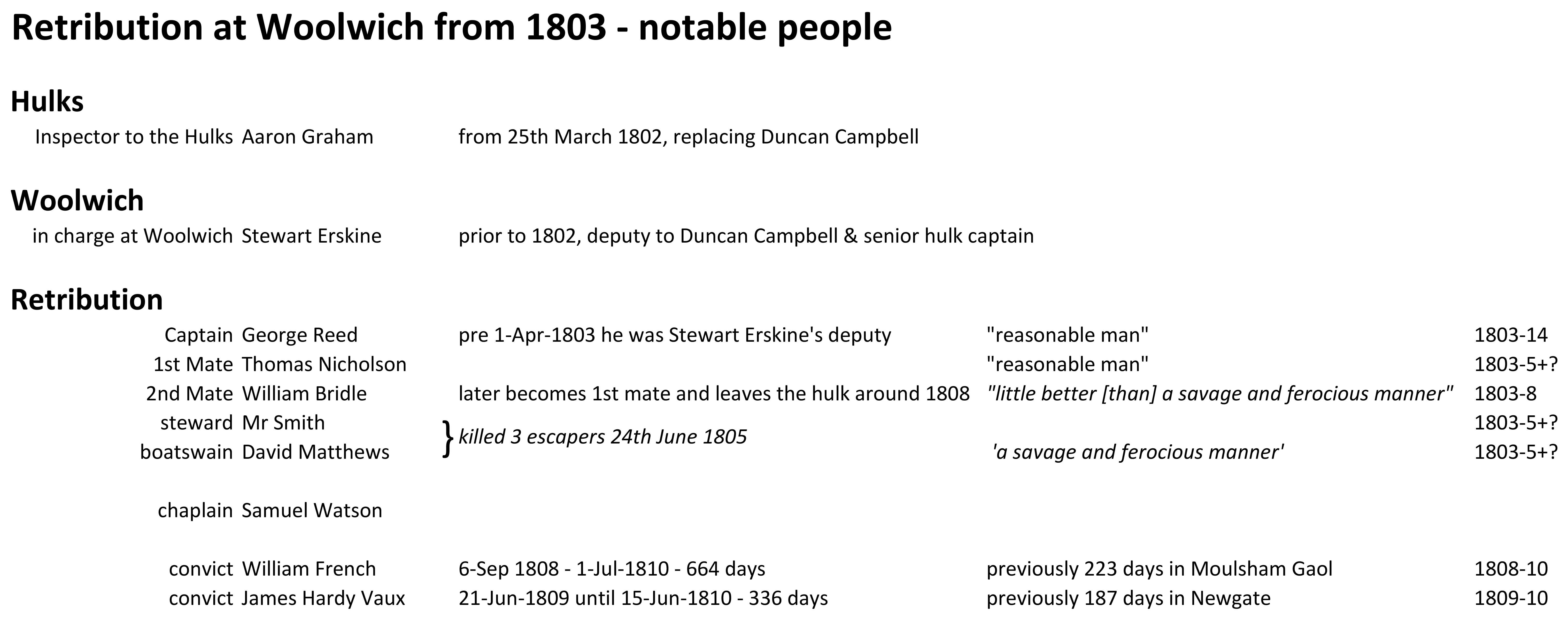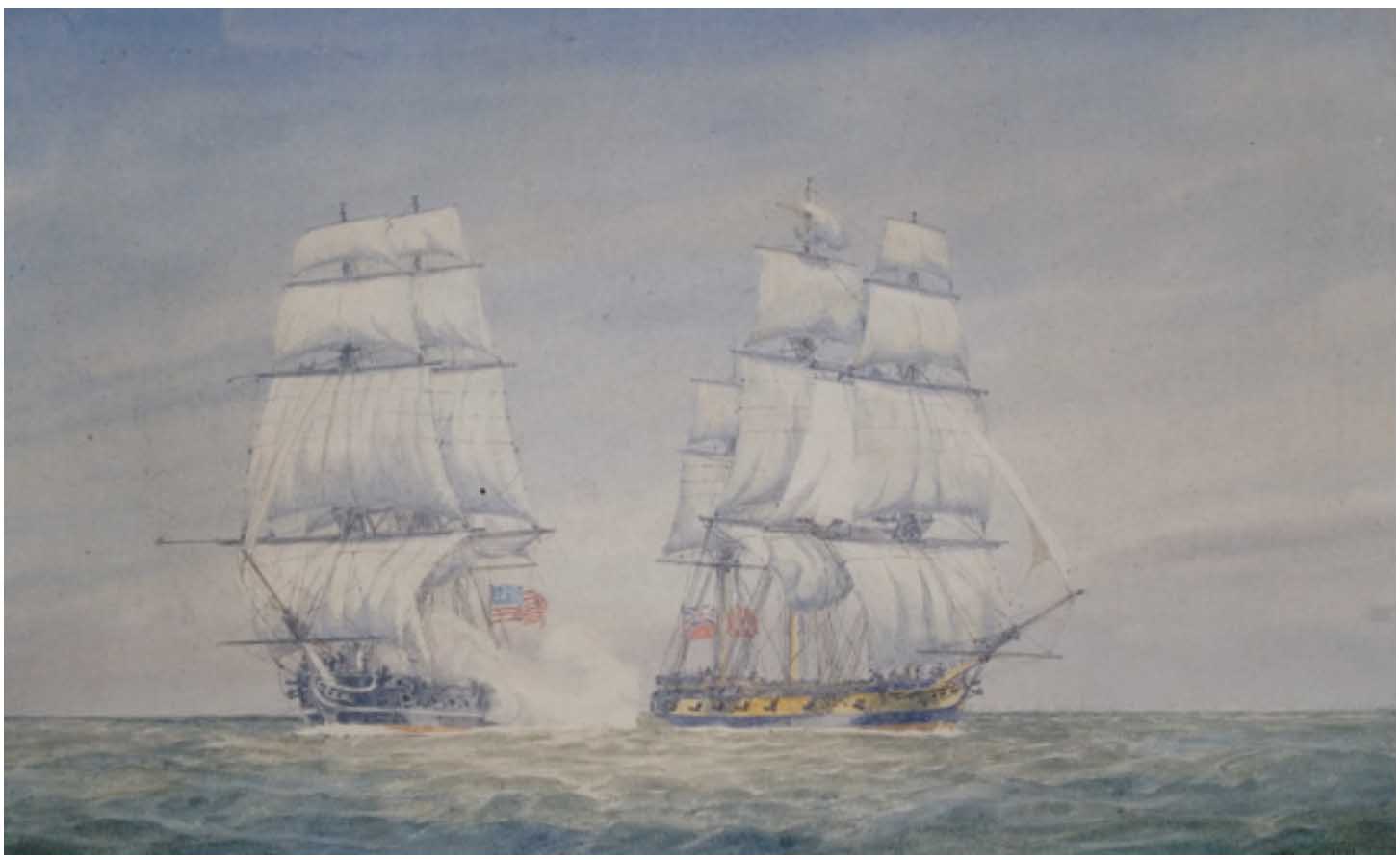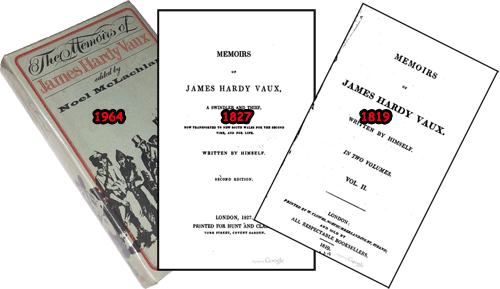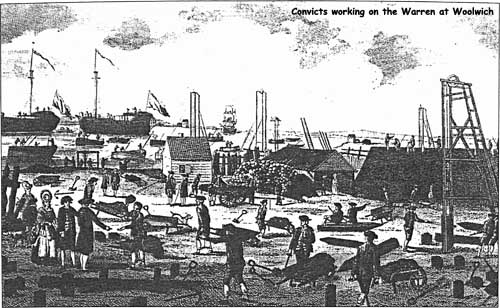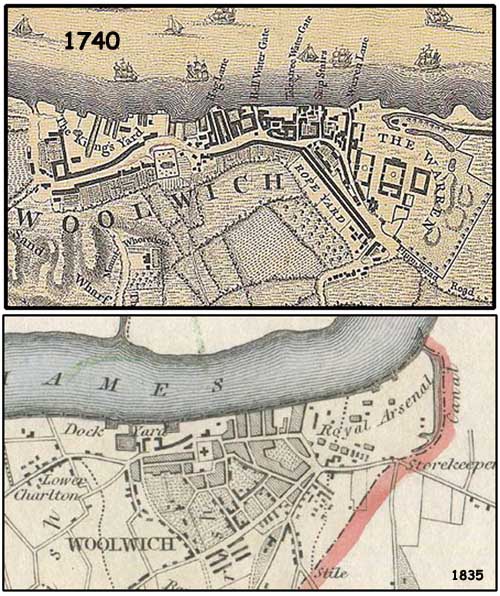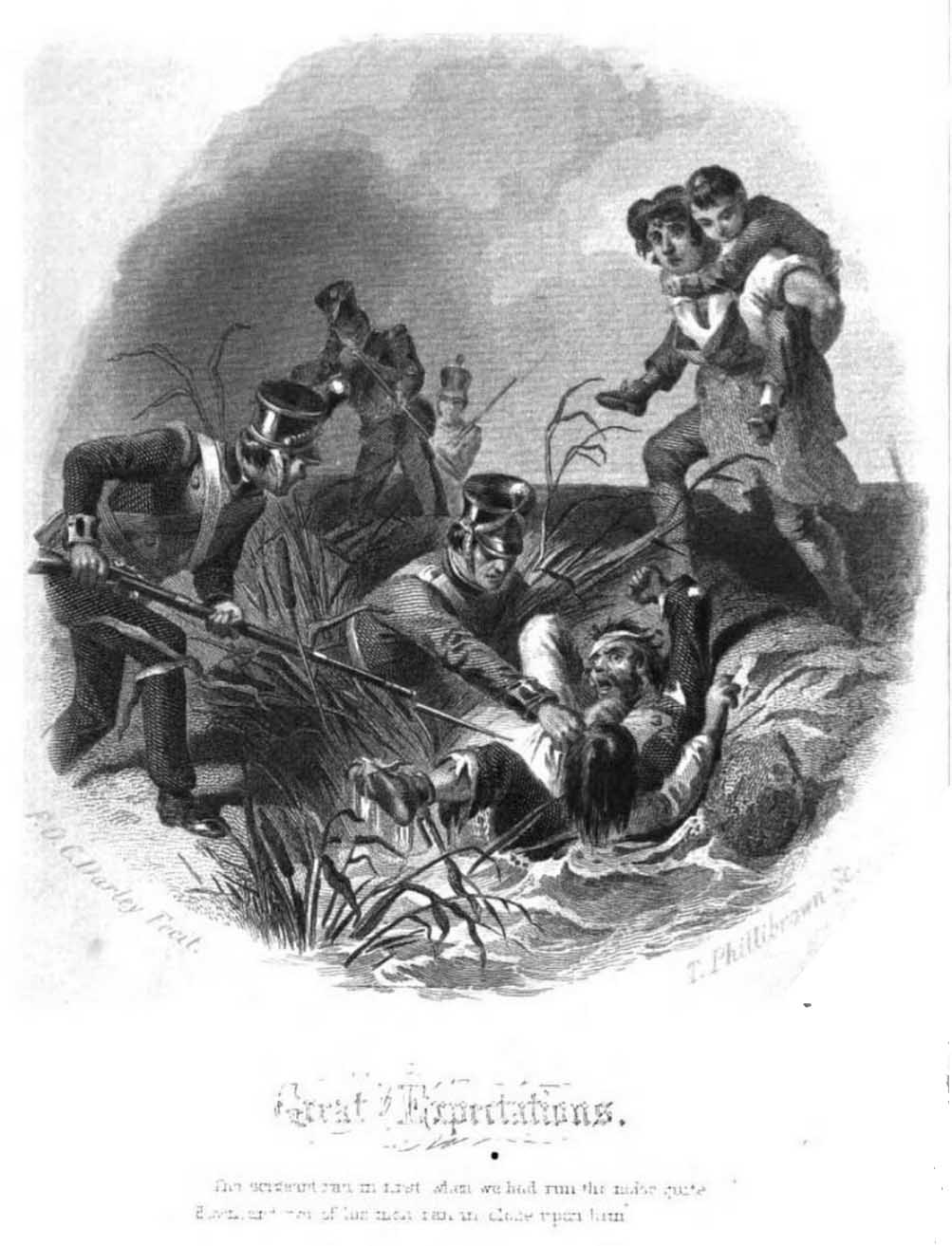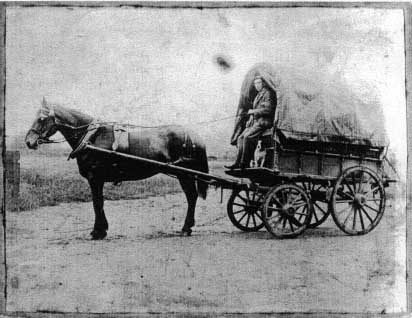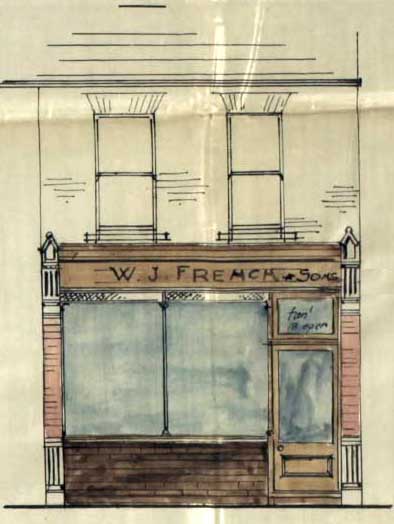![[Frederick Charles French]](FrederickCharlesFrench1875.jpg)
outline descendant TXT tree of FRENCHs
![[Frederick Charles French]](FrederickCharlesFrench1875.jpg)
Frederick Charles French, born 1st September 1875, Marsh, Great Kimble, Buckinghamshire, England.
French line before 1730
Our French ancestry before 1730 is not very clear. There are many John French's and ours may well have been born elsewhere than Finchingfield, Essex. The parish records of those days make it difficult to identify families with any confidence, and this part of Essex is close to Suffolk and Cambridgeshire adding to a genealogist's problems, but it seems that 4 or more generations of our French's might have lived in the parish of Felsted, taking us back there to 1640, maybe even earlier.
ESSEX FRENCH IMMIGRANTS 1330-1550
It is possible that an ancestor came from France before parish registers began and if so they might be listed among the French immigrants recorded between 1330 and 1530 in the National Archives. Maybe they began living in Essex. If so they might be among the 61 shown in this Google map.
RICH ESSEX FRENCH'S
1. Well-off French families in medieval Essex were pointed to by by A D Weld French, see my transcription of Essex French extracts from his 1896 book
A D Weld's County Records of the Surnames of Francus, Franceis, French, in England AD 1100-1350.
2. In 1768 the Reverend Morant published his work on Essex, again referring to rich French's.
See my transcription of Essex French extracts from
Philip Morant's The History and Antiquities of the County of Essex.
FELSTED
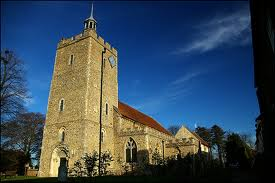
Our French ancestors can be traced back to John French and Elizabeth Bowles who married in Hempstead in 1756 and brought up their family in Finchingfield. Although of Finchingfield at the time of his marriage it appears that John was born in Felsted to William and Elizabeth (Page). It seems that William's brother John married Elizabeth's sister. The IGI opines that William was "of Halstead" but there is no evidence for this. The brothers' father was another John baptised in Felsted in January 1662/3 and his parents were John and Mary. See
Early Felsted FRENCH events from 1554-1754
The records here are difficult enough with such common names as William and John. Unfortunately, none of this is helped by the loss of all Felsted marriage records between 1641 and 1695, due in part to the English Civil War (1642–1651) and the Commonwealth (1653–1659). Also records can be diifficult to read and several or more years of the microfiche for baptisms and burials are completely illegible.
One can never be certain about any ancestral lines but judgements here become increasingly difficult. It may be that the aforementioned John French was a brother of Samuel French who was born to William French (& Elizabeth Drane) who was born to William French & Judith Rose. (There is another Samuel French a couple of generations later.) After that there are several possibilities in the same parish.
The Essex Record Office lists half a dozen wills from Felsted residents between 1554 and 1635. One hopes that these documents will fill in the gaps in the sometimes-difficult-to-decipher early Felsted parish registers and our ancestors might number among the "poor relatives"! One family has promise, that descended from John French & Frances Gyver. A possible scenario is outlined on the following chart. But other possibilities remain and I continue to examine the records from neighbouring parishes. See a FRENCH Felsted hypothesis.
(An index of the images of the early Felsted parish registers held by the Essex Record office is available here. Click on Felsted register image index.)
This John French appears to have been born before the Felsted registers began in 1558. He died in January 1634/5 and according to his will he had a house called Rutlands
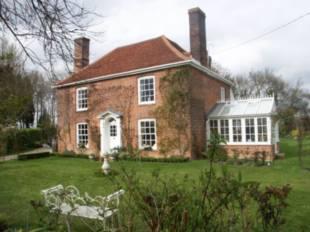
which is here to this day. The Manor of Frenches was in this parish and was situated on the great common near the windmill where the court was formerly held and was afterwards called "Frenches at the Fairy". Today there is also a Frenches Green and Frenches Farm dating from 1205. Morant 1768, "John French, chaplain, and John French, clerk, had license in 1369 and 1373, to give lands in the parish to the Priory of Lees."
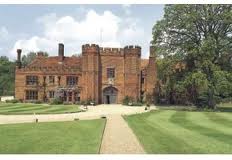
These locations are marked on the following Google map. There is a further Frenches Farm not far away at Oxen End, Little Bardfield also dating from the 13th century, and yet another close by there in Hempstead although I haven't found any history for that.
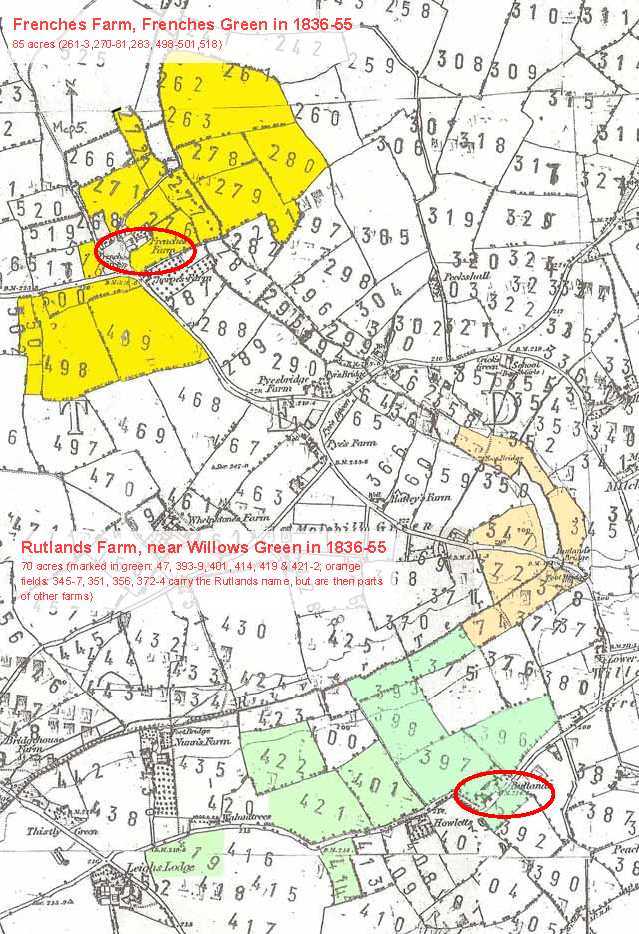
Frenches & Rutland Farms in the mid 19th century according to the Tythe map reported by the
Essex Place-Names Project
This centres Frenches at the Fairy at Frenches Green with documents dated 1367 and 1593. Rutlands was dated 1415 and the house bequeathed by John French on his death in 1635.
The ancestors in all our lines with very few exceptions appear working class through and through, with poverty never far away. The French's in the early 1800s are no exception. Our William left Finchingfield and moved to Panfield, marrying Charlotte Willis there in 1804. Their son William was christened in January 1806 and all appeared well, at least viewed from 200 years later.
Then we discovered that in August 1808 Charlotte was removed from Panfield to Shalford under the Poor Law. These two parishes are very close together and she had been baptised in Panfield, but her place of birth was Shalford and to there she had to be sent as she was a drain on Panfield's coffers. By this time she had a second son, Steel, who was just a couple of months old.
We looked high and low but couldn't discover what had happened to Charlotte's husband, William. Had he run off and abandoned his family? Had he died in another county? It was a decade later that we discovered that he had been convicted of grand larceny at the Lent Essex Assize in 1808 and been sentenced to 7 years transportation.
One Australian web site explains who the convicts were, "The majority of the 165,000 convicts transported to Australia were poor and illiterate, victims of the Poor Laws and social conditions in Georgian England. Eight out of ten prisoners were convicted for larceny of some description". Larceny was, of course, William's offence and he was also 26, the average age of those transported. His family's tragedy was probably very typical of its time.
At the time of writing the above we didn't know what happened to William, following his conviction. Our searches continued. Charlotte re-married in 1831. Did she know that William was now dead or had she - like many other women in similar circumstances - just made that assumption.
Searches reveal that he did not make the journey to Australia before 1812. Several other prisoners at the same Essex Assizes were first sentenced to death and then reprieved. Unlike William, they can be found in the transporation records. Another prisoner, James Cole, was also sentenced to 7 years. As with William there is no obvious sign that he received clemency but no record of him having been transported before 1812.
The Lent Essex Assizes were reported in the Chelmsford Chronicle of 11th March 1808 and here we find that between 7-Mar and 10-Mar, William was convicted of merely stealing fowls [value today around £156 or $311] from Thomas F Marsh, of Stebbing. A brief look at the IGI suggests that the latter was Thomas French Marsh, the son of Isaac Marsh and Elizabeth French. Thus it might be that William had stolen a few birds from a cousin, albeit not a close one. It is tragic that someone should be sentenced to transportation for stealing so little, possibly because his family was starving, but that the prosecution might have been prompted by a blood relative is even more disturbing. Click here for the sentence.
Up the River
We slowly came to the Conclusion that William must have died while incarcerated. At the time of sentencing he would have been held in Essex county prison, Chelmsford's Moulsham Gaol, image of prison and Moulsham Bridge courtesy of Essex Record Office.
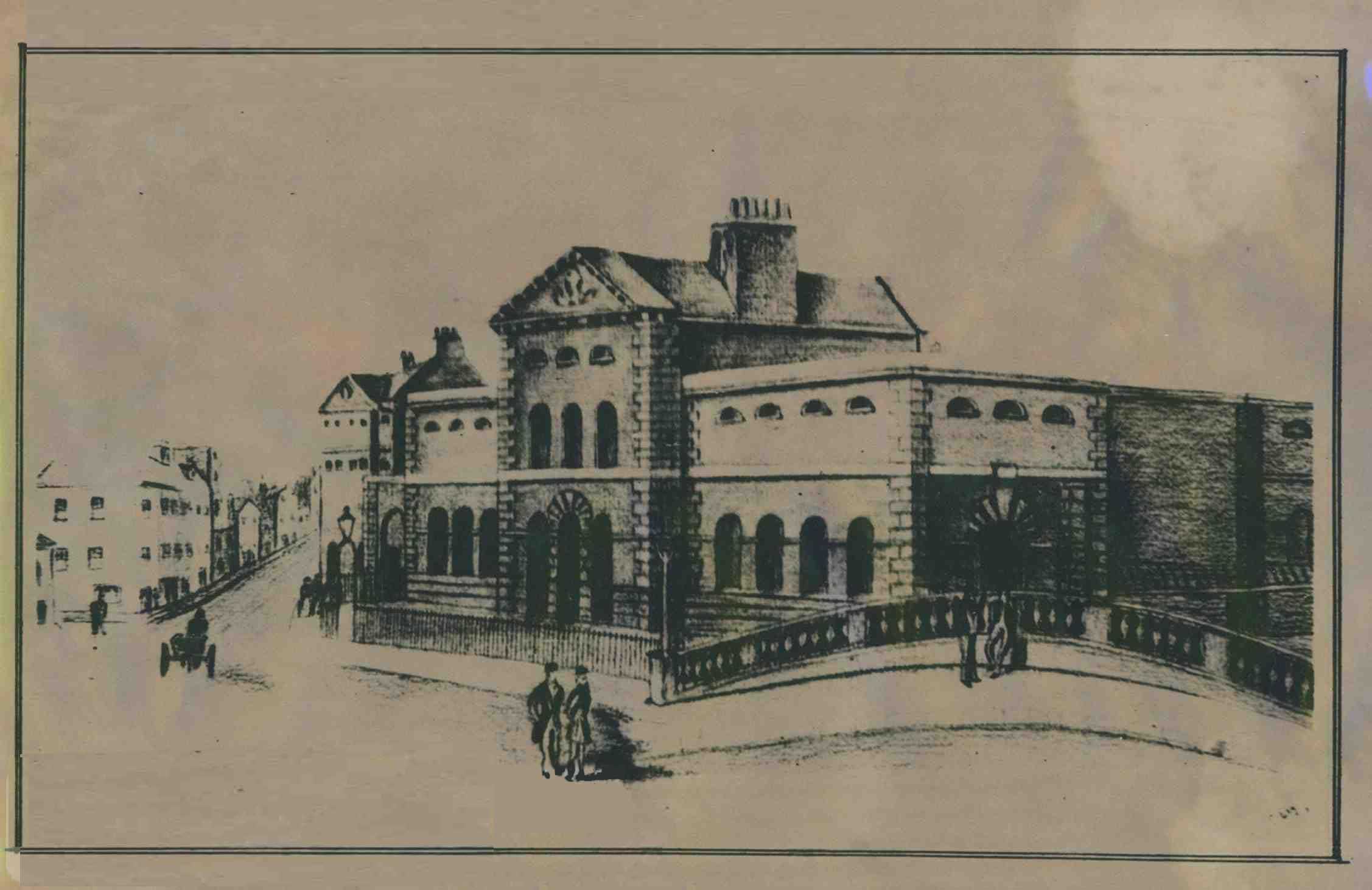
We later found he spent up to 223 days there before being transferred to a then unknown hulk.
Prisoners sentenced to transportation were often sent to the prison hulks on the Thames, near Woolwich or Sheerness, in Kent to await transportation. The life of a convict on a hulk was brutal - "Mortality rates of around 30% were quite common. Between 1776 and 1795, nearly 2000 out of almost 6000 convicts serving their sentence on board the hulks died." "Many convicts were forced to rely on their friends and relatives for clothing." So not much help there for our William French if he was there, with a destitute Charlotte 50 miles away in north Essex.
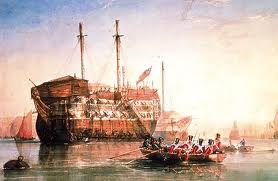
Indeed,
He was imprisoned on The Woolwich Retribution for 664 days awaiting transportation from 6th September 1808 until 1st July 1810, before being transferred to the hospital ship HMS Savage where he died on 22nd August 1810 after 53 days. Three percent of those on the Retribution died in that year.
Here are details of the clothing supplied to William. Because they were insanitary, in the early 1800s 'beds' had been replaced by hammocks, but this allowed even more prisoners to be packed into each hulk making conditions worse.
All at Sea! What was the previous identity of the Woolwich Retribution 1803-1814?
I returned to this saga in August 2023 after 5 years away. Books, online sources and accepted authorities still paint a confusing, contradictory picture on our ancestor’s prison hulk and its previous identity, something I was unprepared for! Even primary sources of the time can contain false information. Fake news is nothing new! The problem is working out who and what are telling the truth. Retribution is a relatively common name. Eventually after a few U-turns and abandoned hypotheses, things became clear.
Woolwich Retribution, 1803-1814
In 1804 the captain of the hulk was George Reed, his first mate was Thomas Nicholson and second mate William Bridle.
The Retribution and Bellerophon at Sheerness ... plus the Zealand!
With file HO 9/7-1 to 6, the National Archives is less clear regarding Sheerness embarcations than it was with Woolwich. On the first page identifying the contents of HO 9/7 the date of 1802 relates to the date of the first convictions of the prisoners and not when they first joined the hulk. Someone has written of the Retribution and Bellerophon records, “No Easy distinction.” These original documents show prisoners were being received at Sheerness from 22nd January 1810, see HO 9/7-1, 6 of 47. From the National Archive description one would assume it was on the Retribution or the Belerophon, but the National Archives have made a mistake (which they later acknowledge to me) and at that time it is on the Zealand.
See for example, letter 602 in Prisoners' Letters to the Bank of England http://www.british-history.ac.uk/london-record-soc/vol42/pp186-222. John Gilbert writes from the Zealand hulk on 22nd November regarding a Mitigation of his sentence of Fourteen years having been convicted at Norwich Assizes in August 1808. He can be found on HO 9/78-1, 5 of 47.
On 26th April and 23rd August 1813, see HO 9/7-15 of 47, prisoners from The Woolwich Retribution were being received at Sheerness and again this must be on board the Zealand
Charles Campbell's book says the Bellerophon was not placed in service until 1816 and HO 9/7-4 to 5 have an end section beginning at HO9/7-4, 46/51 , "On the 7th October 1816 the ships company of the Portland Hulk in Langston Harbour left that ship on the 16th inst. Arrived on board the Bellerophon Hulk at Sheerness with the undermentioned 150 convicts ... who had been received from the Captivity Hulk while on their passage from Portsmouth to Sheerness." This section ends with the last prisoners being received on 7th December 1825, see HO 9/7-5, 41 of 42. These dates - 1816 to 1825 - are consistent with those for the Bellerophon in Charles Campbell's book, The Intolerable Hulks.
Thus all the early records from 1810 will be for the Zealand boardings, with those for the Retribution at Sheerness not beginning until a month or two before the summer of 1815 according to Charles Campbell's book. He says the Zealand was at Sheerness for three years which appears to be an underestimate.
The last prisoners received on board The Retribution at Sheerness would be on 22nd February 1834, so it would be receiving convicts from 1815 to 1834.
The Sheerness Retribution, 1813-1833
One Retribution, first at Woolwich and then at Sheerness
Previous Identity of the Woolwich Retribution
In 1807 the Retribution had an establishment of 32 men including 18 guards while the hospital ship Savage had 4 including two guards.
But was the hulk an elderly "Spanish 32-gun"? Spoiler: No. it wasn't! False information. :-) See later.
Sheerness Retribution
After Googling online, The Retribution on the left does not look like a 32-gun or a 74-gun Spanish ship to me. With Grieve's notes on ships colours, it does not appear that he took any artistic licence with his portrayal. To my very untrained eye there does seem to be similarity to a British 74-gun. I have superimposed part of the plans of the 74-gun HMS Edgar, from Norman Swales' drawing on page 77 of Rif Winfield's superb book.
Two Hypotheses
I discount the "one Retribution" theory despite its acceptance by many. Charles Campbell (ibid) was mistaken. The view that the Sheerness hulk had been HMS Edgar appears to be confirmed. That leaves me with the question, What was the identity of the Woolwich Retribution prior to 1st April 1803?
Both Rif Winfield's British Warships in the Age of Sail 1714-1792 and David Lyon's The Sailing Navy List All the Ships of the Royal Navy - Built, Purchased and Captured - 1688-1860 record there being two hulks at Woolwich (apart from the hospital ship Savage) at the time of The Retribution which took on convicts from 1st April 1803 to 14th July 1814:
1. the 50-Gun HMS Preston (commissioned 1757) - Rif Winfield's book pages 153-4 and David Lyon's pages 77 and 336 - which was fitted as a sheer hulk (used as a floating crane) at Woolwich in 1785 and broken up at Woolwich in (January, Rif Winfield) 1815.
2. the 44-gun HMS Assurance (1780) - ibid 178-9. receiving ship from 1799, in ordinary (in reserve) until broken up (March, Rif Winfield) 1815.
The Retribution at Woolwich began its prison hulk life there in 1803 and finished after 1814 and this could fit either vessel although there is no explicit mention of a role change or a name change for either. My first guess was the Retribution at Woolwich 1803-1814 was HMS Preston (1757) as the smaller, 44-gun HMS Assurance (1780) was a receiving ship (used for newly recruited sailors) and in ordinary (mothballed) during that time. BUT the lack of evidence for both a role change and a name change led me to continue the search.
Royal Admiral
Previous searches had identified the captain of the Woolwich Retribution as George Reed and I found correspondence in the National Archives files where he had written in support of prisoners receiving pardons. I continued downloading their files, reading through thousands of pages of handwritten scrawl until I came across the 718 pages in 'HO 42/79: HO 42. Letters and Papers. Supplementary, 1804 Apr 01-1804 Dec 31'.The key information was to be found in pages 56 to 138 of the 172 pages in HO-42-79_3.pdf. I found George Reed was linked to two vessels, the Retribution and the Royal Admiral, and both were given the same purchase price of £1,415. Later I found a document on page 87 of 172 where it explicitly stated 'Royal Admiral ... now called the Retribution'.
The Woolwich Retribution is the Royal Admiral
Click below for a transcription of the key pages
A quick search of David Lyon's and Rif Winfied's books revealed there was no navy ship of that name, other than HMS York (1796) which foundered in the North Sea in 1804 and so could not have been the Retribution.
Thankfully, Wikipedia came to the rescue finding the East Indiaman Royal Admiral launched in 1777, clearly not an ex Spanish ship as the James Hardy Vaux book had suggested in its notes. However, once again there was a problem as this and other websites pointed to the fact that according to Lloyds Reister the ship was still in action up until 1807 on route to Botany Bay, New South Wales so could not at the same time be hosting convicts at Woolwich.
After that she was sailed to Deptford and was converted to a hulk there and at Woolwich. According to Lloyds Register the owners had been Gillet & Co. An Australian website gives the owners as Gabriel Gillet and William Wilson, the captain of the ship. According to the National Archives Frances Barnard, Sons & Roberts was billing the owners for work on her at the Deptford Green Yard as early as 24th September, but she wasn't sold until maybe the 6th or 12th December with £1,460 reaching the shipbrokers Tibbott & Hutchinson (sometimes written Tibbutt & Hitchcock) on 16th December. Click above image for closer view of Deptford area (courtesy of Corporation Of London Records Office).
Frances Barnard was the widow of William Barnard (died 6th March 1795) who had built the Royal Admiral at the Grove Street yard in Deptford for Sir Richard Hotham, launched in 1777 and operated by the East India Company for 8 of her 9 voyages. She had three decks. She was sold to the Larkins family and in 1798 sold to Gillet & Co of Calcutta. She was 36.63 metres long, with a beam of 11.53 metres. She had letters of marque, 24 guns and a crew of 70 men. She had been reported as being of 914, 919 and 923 tons. At Woolwich the Retribution tonnage was recorded as 937 31/96.
In contrast to Navy vessels there is a dearth of details on those built for the East India Company voyages. That is because the ships were owned by their ‘husbands’ - in the case of the Royal Admiral, Sir Richard Hotham - and sometimes information can be found in the private papers of a husband. According to John E Barnard's Building Britain's Wooden Walls, The Barnard Dynasty c 1697-1851 “Contracts between husbands and builders have, in a number of cases, survived, so that the exact dimensions and all other details of the vessels construction are open to inspection.”
Fascinatiing detailed descriptions of the Royal Admiral's two voyages to Botany Bay, New South Wales carrying convicts are provided by the Australian 'Free Settler or Felon Convict and Colonnial History' website:
Choppy Waters
Murky Waters
Notable People
The Hulk Hospital Ship, the sloop HMS Savage (1778)
HMS Savage was a Swan class vessel, gun-deck length 29.46 metres, with a beam of 3.92 metres and was of 310 87/94 tons. She had 14 or 16 guns, two decks and a crew of 125 or 121 men, built by William Barnard's father John Barnard at his Nova Scotia yard on the Orwell at Ipswich.
The following picture shows the American Privateer Congress Capturing HMS Savage (on the right, later to become the hulk hospital ship Savage) on 6 September 1781 during the American War of Independence. Savage was recaptured by HMS Solebay before her prize crew could reach a safe American port. Mariners Museum, USA.
James Hardy Vaux's Memoirs
Noel McClachlan says of James Hardy Vaux's Memoirs, "His short account of his stay on the Retribution is in fact the most powerful first-hand depiction we have of what life was like to a convict consigned to the hulks", in his Introduction to his edition of the book, page li. Click on the book image to read this.
Woolwich Burials
William would probably have been buried within the Royal Arsenal at Woolwich in the east part of the Warren. The cemeteries were visible as rows of hillocks with no defined boundaries. Bones were found during building work in 1859 and 1912.
Later convicts were buried by the three trees on the ridge at Trip Cock Reach on Plumstead Marshes, see
Mayhew & Binny's account of such burials.
Today the three trees burial site appears to be beneath Morrison's car park in Thamesmead, around a mile from a couple of the filming locations for A Clockwork Orange and a few hundred yards from Belmarsh prison. (Charles Dickens's father was sent as a debtor to The Marshalsea in 1824 and this prison was 9 miles to the west, also on the south side of the Thames.)
"Normally the hulks were anchored off the south shore of the Thames. But sometimes they were stationed on the north side of the river because of unrest and escapes by the convicts. In most years there just half a dozen escapes from the Retribution although in 1811 there were 29 (6% of those on board). Escapes to the more populous Woolwich waterfront were more common than to the north shore."
Fiction
Remember how Abel Magwitch escaped across the marshes from a hulk around December 1812 two years after William died. Maybe he knew William. ☺ Magwitch was, of course, Pip's benefactor in Charles Dickens' Great Expectations!
frontispiece illustration from Great Expectations, 1861, Google Books.
W J French & Sons of Milton Street
William & Charlotte's grandson was another William French. He was a journeyman miller in 1861, railway porter & then clerk between 1865 & 1869, "miller" in 1871, foreman at a fizzy drinks factory in 1873, miller journeyman in 1875, and traveller in corn & flour trade in 1881. In the early 1880s he set up a business in Southend–on-Sea employing his sons - “Family Miller, Corn Dealer ... Agent AF Style & Co's Maidstone Ales”. At some time before 1901 this was established behind 8 Milton Street with an office, stables, store and yard. The horses were pastured near the neighbouring brick fields and Milton Hall Brick Company.
In 1899 William dropped dead aged 56 while out on a round with one of his vans.
The local newspaper reported it thus:
"SUDDEN DEATH OF MR W FRENCH, OF SOUTHEND"
"It is with regret we announce the painfully sudden death of Mr. William French of Milton Street; the sad event taking place early on Wednesday evening at Shoeburyness, while deceased was engaged inside the Garrison following his business. As is well known, Mr. French has for nearly a score of years kept a corn merchant's store in the town, and did considerable trade in the surrounding districts with vans. On Wednesday morning he accompanied one of those vehicles on its round, and in the afternoon went inside the barracks at Shoeburyness. Soon after five, while attending to customers, he was taken suddenly ill, and bystanders, seeing he was sinking, removed him with all haste to the Garrison Hospital, but before he reached there he had passed away. A few weeks ago deceased was attended by Dr. Waters for a weak heart, but during the last day or two he has seemed in usual health and left home on Wednesday morning in good spirits. This sudden bereavement is a great blow to Mrs. French and the family."
Ten years later in 1909, Number 8 Milton Street was given a shop front displaying the name board "W J French & Sons". The sons were Frederick Charles & William Arthur French and their deceased father was the “W J French” but where on earth had the “J” come from? Was it an affectation? There is no mention in the birth, marriage or death records.
Number 8 would later become an off licence and the yard and stables at the back a builder’s yard and workshop for French & Egerton, the company set up by William's grandson, Frederick Gordon French. They were demolished in 1967 along with the nearby Talza arcade as part of the redevelopment of the Victoria Circus area.
Samuel George French, born Jul-Sep 1869 in Bethnal Green. Middlesex
The William French who set up the family business who died in 1899 had three sons - the two who inherited the business and Samuel who appears to have been the black sheep of this family. In his will, his father William wrote in 1889 of his 19 year old son " ... declare that I have purposely excepted and omitted my son Samuel George French from participating in my estate and from receiving any benefit under this my Will in consequence of his bad behaviour to me and his mother which has compelled me to consider that he is not deserving of any assistance from me ...". This opinion appears not to have changed ten years later when William died.
Samuel George French married Norah Connelly in 1906 but it has taken us years to find out what happened to the couple. They do not appear in the 1911 census for England & Wales. In 2009 we discovered that Norah had given birth to Mildred Gwendoline in 1904 and on the 28-Feb-1907 all three of them set sail for Halifax, Nova Scotia on board the Southwark with Samuel describing himself as a farmer (he a had previously been a carman, a driver of a horse-drawn van). They moved to Moncton, Westmorland, New Brunswick, Canada where they had two further children, Samuel Charles and Harry James. Mildred married Ernest Arthur Boyd in 1921 and Samuel George French shot himself on 3-May-1937 with a .22 rifle. The "Jury undecided as to being suicide or accident". He had been working as a carman for Canadian National Railways.
Samuel George's son Samuel Charles French worked in Moncton for Eaton's, Canada's largest department store retailer and mail order business. He had married Joan Laura Howland in 1944. We believe they died in 1985 and 1987 and were buried in Elmwood Cemetery, Moncton, but we don't know if they had any children. If there were any they would be Chris's second cousin in England, and it would nice to be able to trace them.
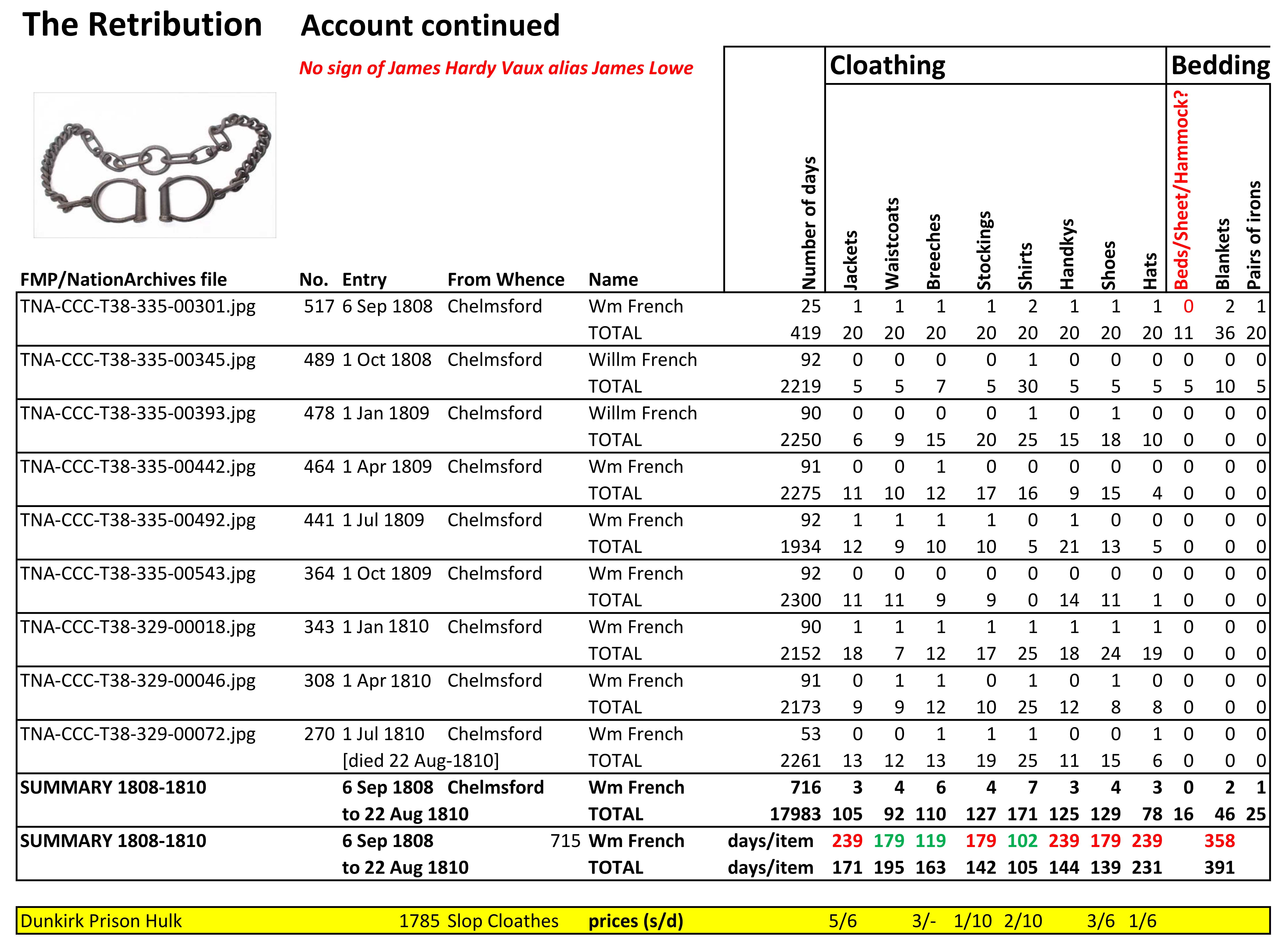
The prison ship The Retribution moored at Woolwich took on convicts between the 1st April 1803 and the 14th July 1814. This is made plain in the National Archives file HO 9/4-1 to 5. My great great great grandfather’s stay there overlapped with that of James Lowe, alias the famous James Hardy Vaux, who was imprisoned there from 21st June 1809 until 15th June 2010 prior to the second of his three transportation to New South Wales.
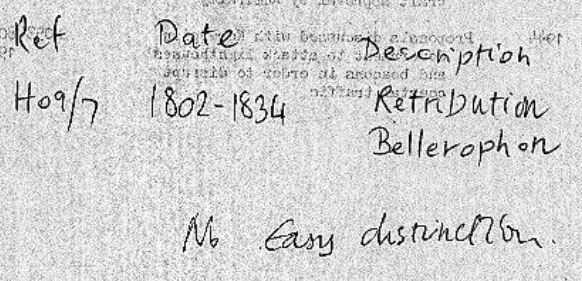
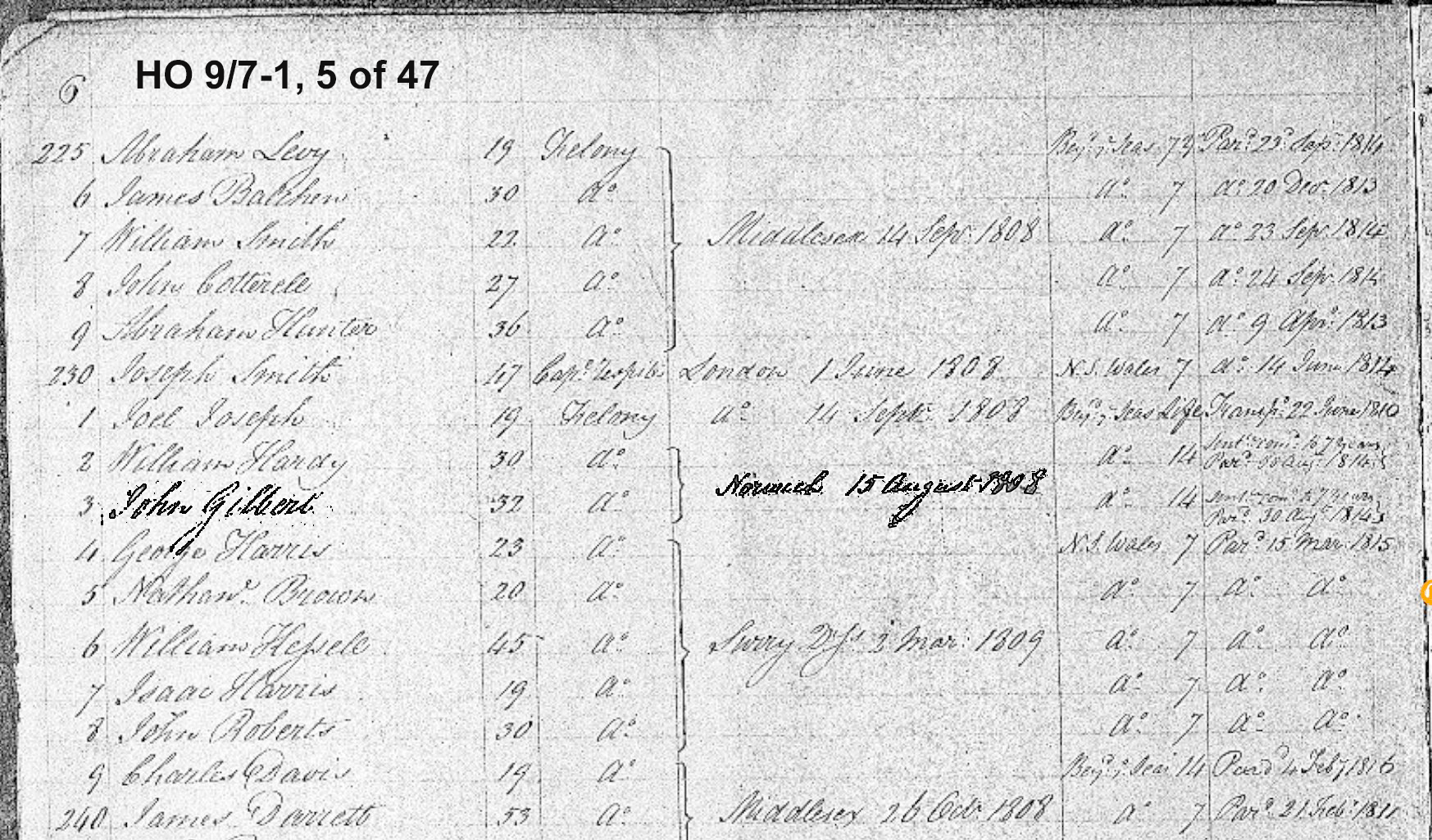
Rif Winfield's book British Warships in the Age of Sail 1714-1792 on page 78 identifies HMS Edgar as the Sheerness Retribution, "HMS Edgar ... fitted as prison ship for convicts at Chatham ... 10 - 12.1813. Renamed Retribution 19.8.1814 as convict hulk at Sheerness to 1833 BU at Deptford 2.1835." This is consistent with the view that there were two Retributions, one at Woolwich and one at Sheerness. There is letter 159 in Prisoners' Letters to the Bank of England http://www.british-history.ac.uk/london-record-soc/vol42/pp34-65 from John Pearson on the Retribution at Sheerness 10th July 1814 slightly predating the renaming date of 19th August.
Charles Campbell in an appendix on page 227 to his book says there was a single hulk called the Retribution from 1804 for 30 years. On page 116 he writes "a Select Committee of the Commons had asked the Commissioners of the Navy to develop plans for converting the hulks into more suitable prison ships" and continues on page 117 "The first ship retrofitted was the 74-gun Retribution ... done by the Navy at the Sheerness dock yard ... begun late in 1814." He goes on to say that the remodelling of the Retribution was completed a month or two before the summer of 1815. The year 1814 is consistent with the view that the vessel had been HMS Edgar but not with the ‘retrofitting' implying it had already been a hulk.
In chapter 30's note 13 on page 307 of the 3rd edition of The Memoirs of James Hardy Vaux printed in 1964 it refers to The Retribution as being "an elderly Spanish thirty-two-gun warship by origin and the largest of all the hulks at that time". The editor MacLachlan´s 1964 preface makes clear that Vaux wrote his memoirs in Australia years after leaving England and the Retribution, and memory lapse could cast doubt on some of his memoir´s details. According to MacLachlan, Vaux may have written them at least four years later in 1814-15, possibly revising them 1815-16 before they were edited by Barron Field and sent to John Murray at the end of 1817 to be published 12th January 1819 and printed by William Clowes. As we know, editors can make big changes to manuscripts particularly if the original is wanting and I wonder what Field may have changed and added. As a consequence, probably not too much reliance should be placed on some of the detail when one is looking for Retribution clues in the memoirs although his "six hundred men" and MacLachlan's "largest of all the hulks at that time" may not be far off. The average number on board The Retribution at Woolwich during 1809 when Vaux and my ancestor were on board was 555 according to the 9th May 1814 House of Commons Report from the Committee on the State of Gaols of the City of London, etc, see Appendix D, page 165.
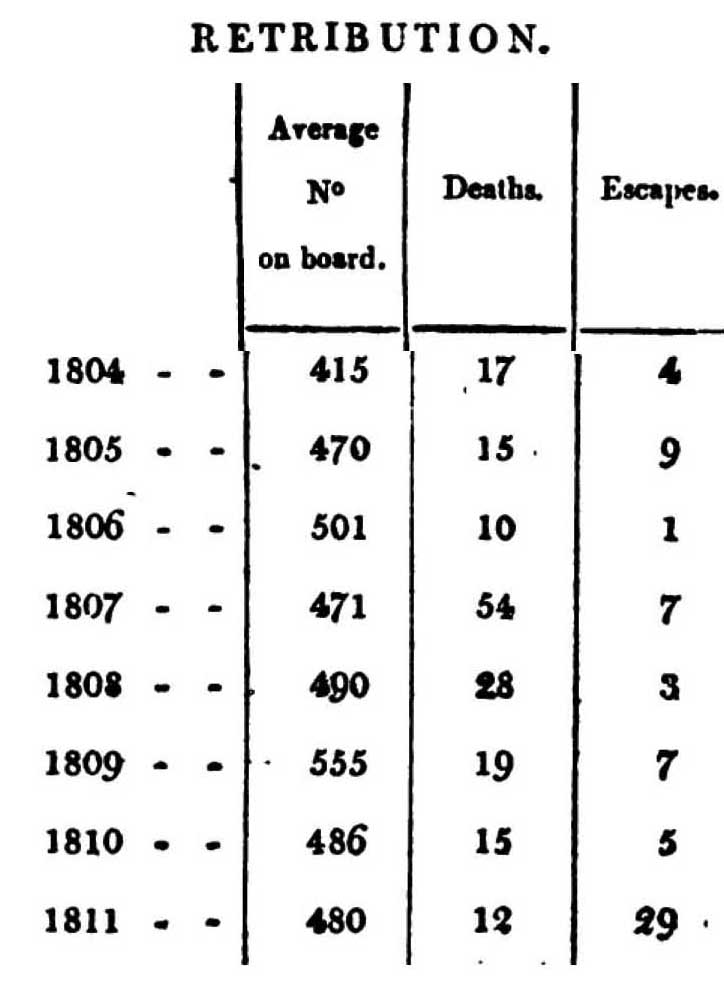
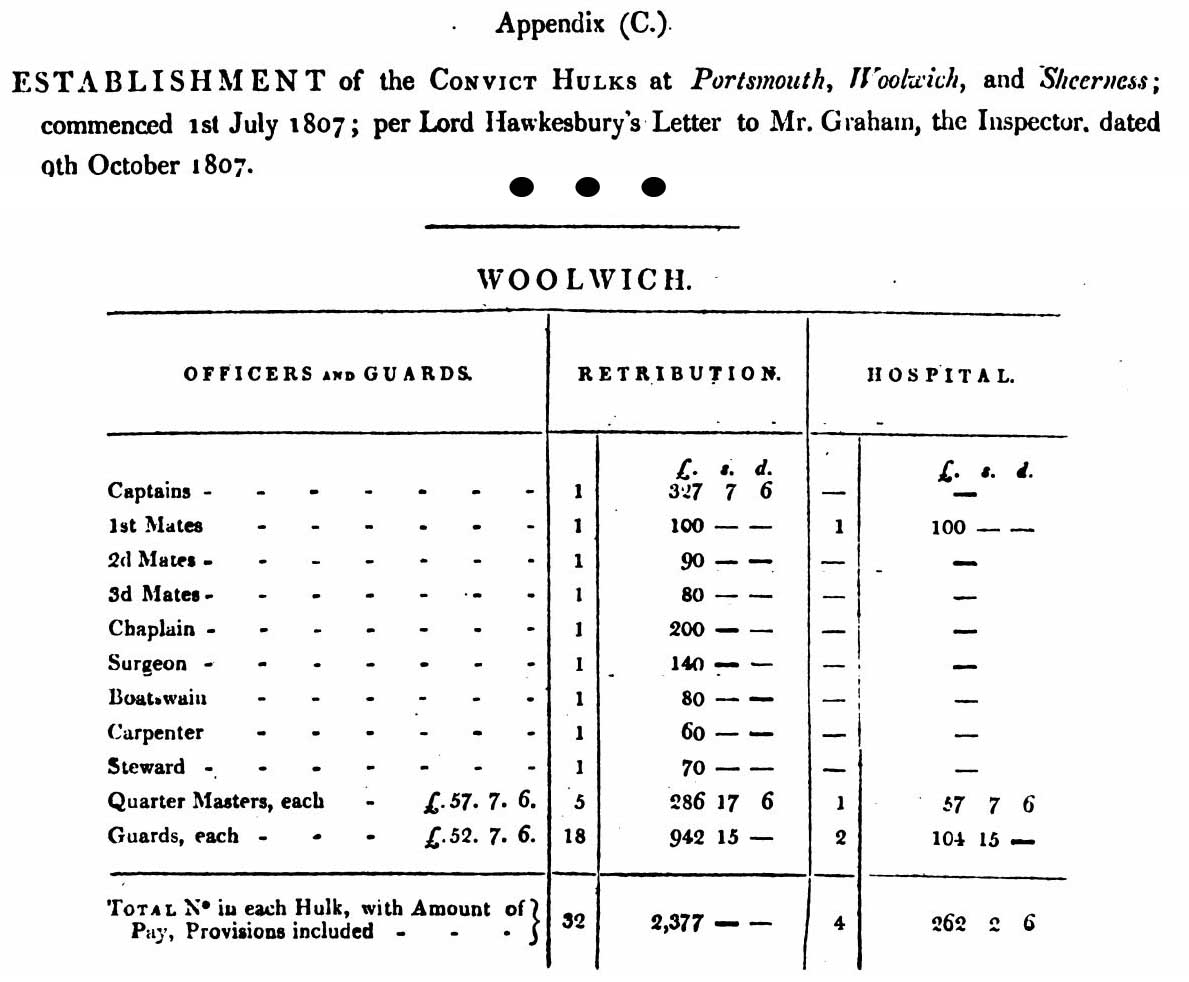
John Grieve sketched The Retribution on 7th August. The picture is from the Greenwich Maritime Museum and at first glance online it misleadingly suggests the year was 1815, a year after the Woolwich Retribition took on its last prisoner, but closer inspection reveals it was in 1822 like all the sketches in the sketchbook. Thus the hulk on the left is the Sheerness Retribution, which had previously been the 74-gun HMS Edgar (1779) and that on the right the Bellerophon which first took on prisoners on 7th October 1816 according to HO 9/7-4, 46/51. 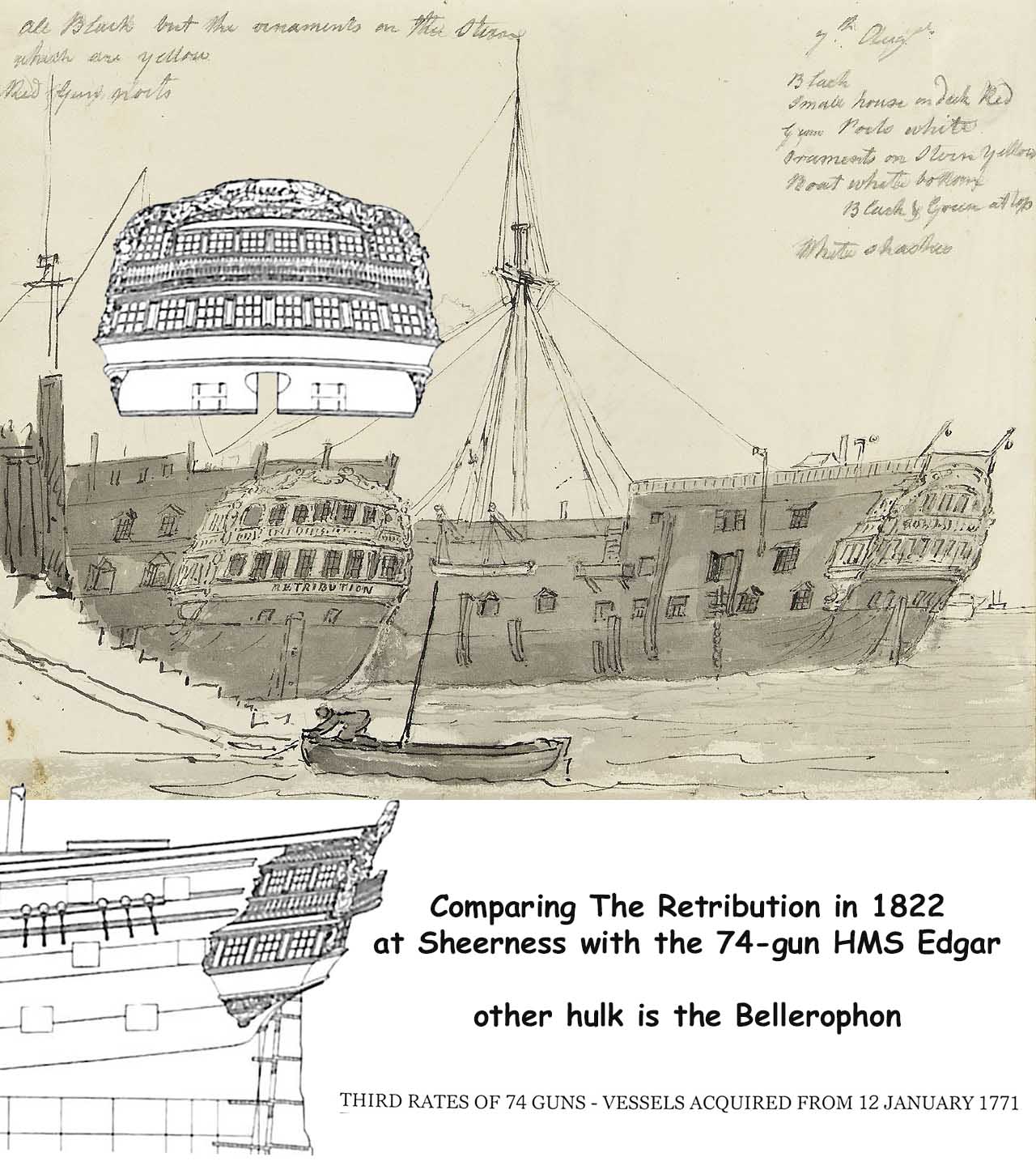
It now seems to me that there are two hypotheses:
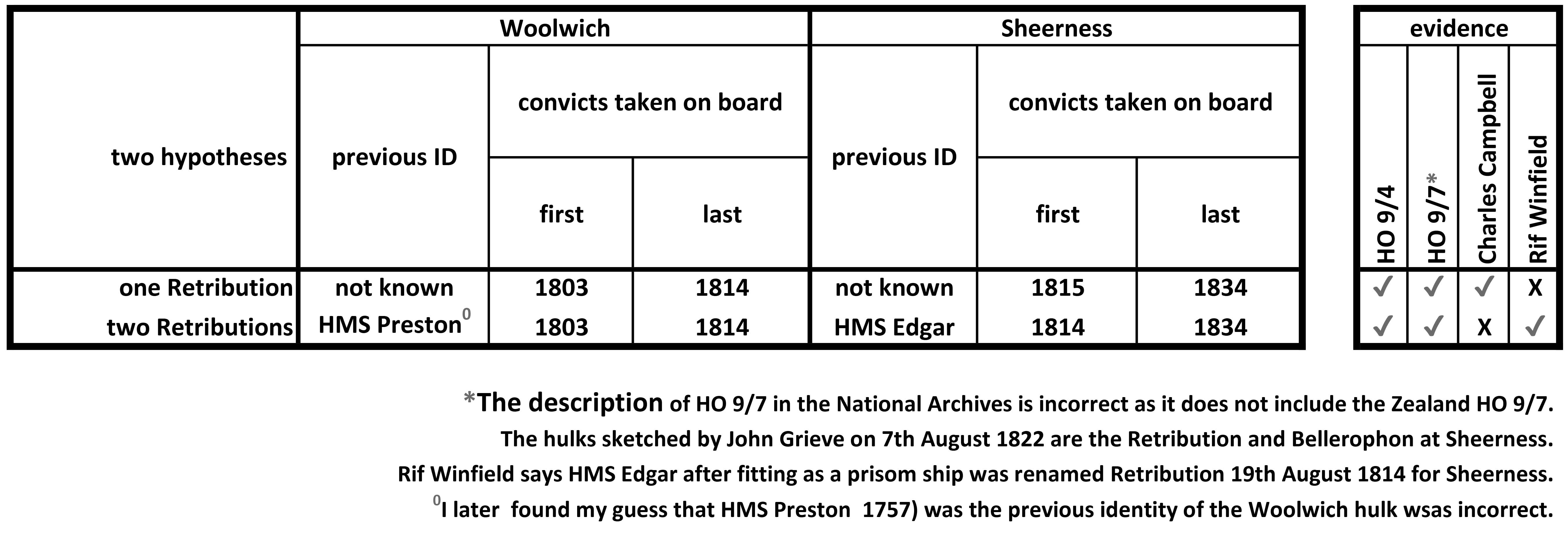
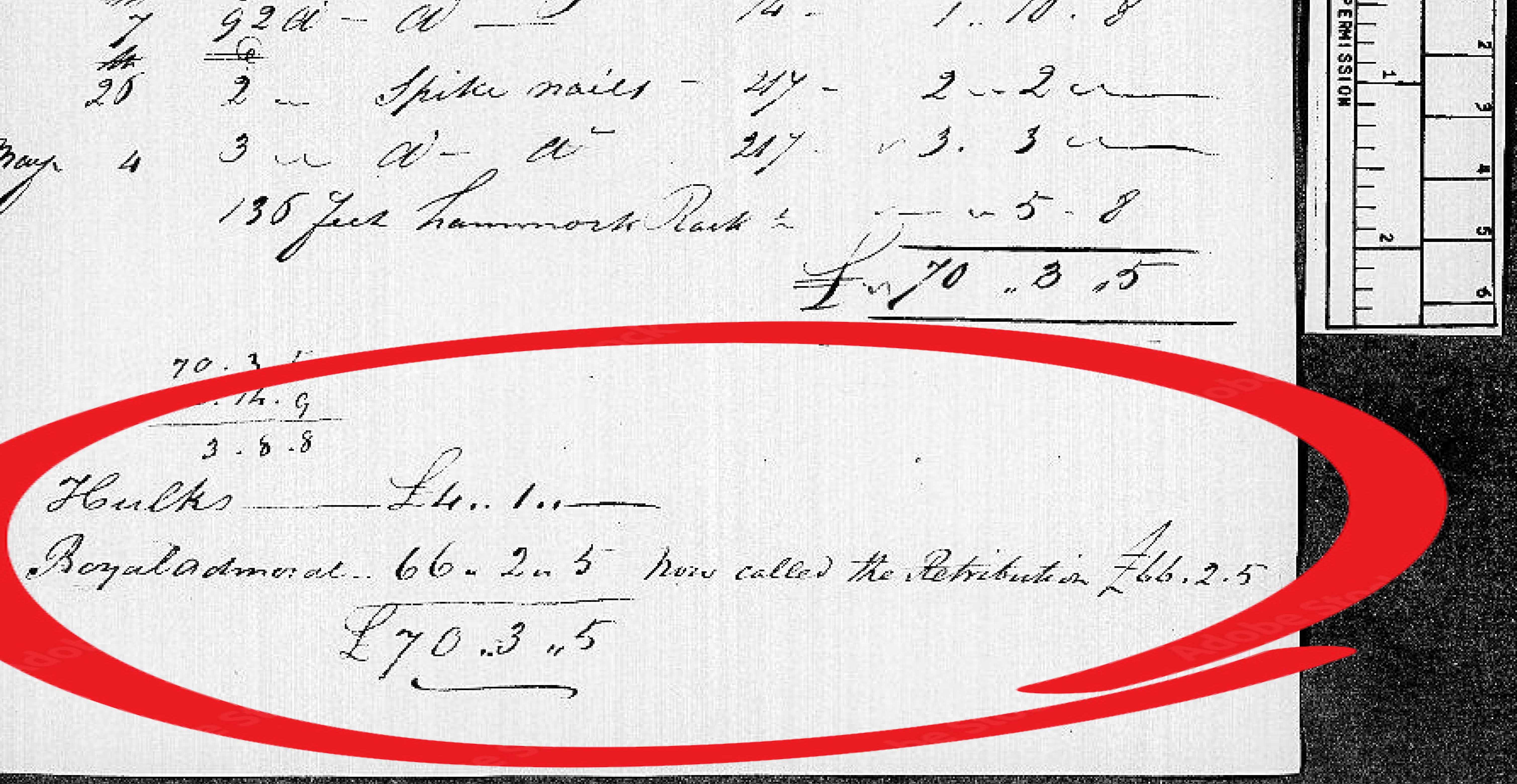
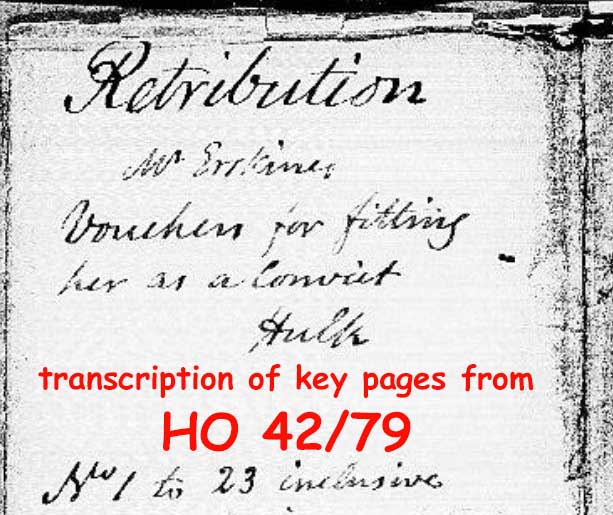
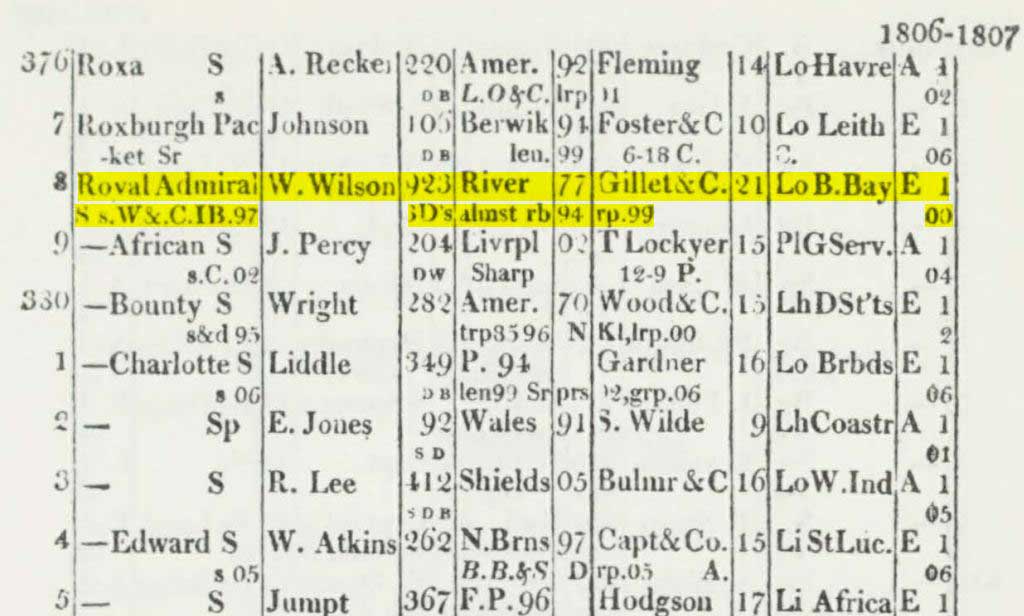
I finally came to the conclusion that the Lloyds Register entries for the years after 1802 were bogus. It is now obvious that the Royal Admiral had just two voyages to Botany Bay, transporting convicts. On her first, 1792-3 passage 12 of the 348 convicts died and four children were born The second and final voyage with 300 convicts terminated at the Downs off the Kent coast on 2nd July 1802. Forty-three convicts had died along with her surgeon, four seamen, a convict's wife, and a convict's child.
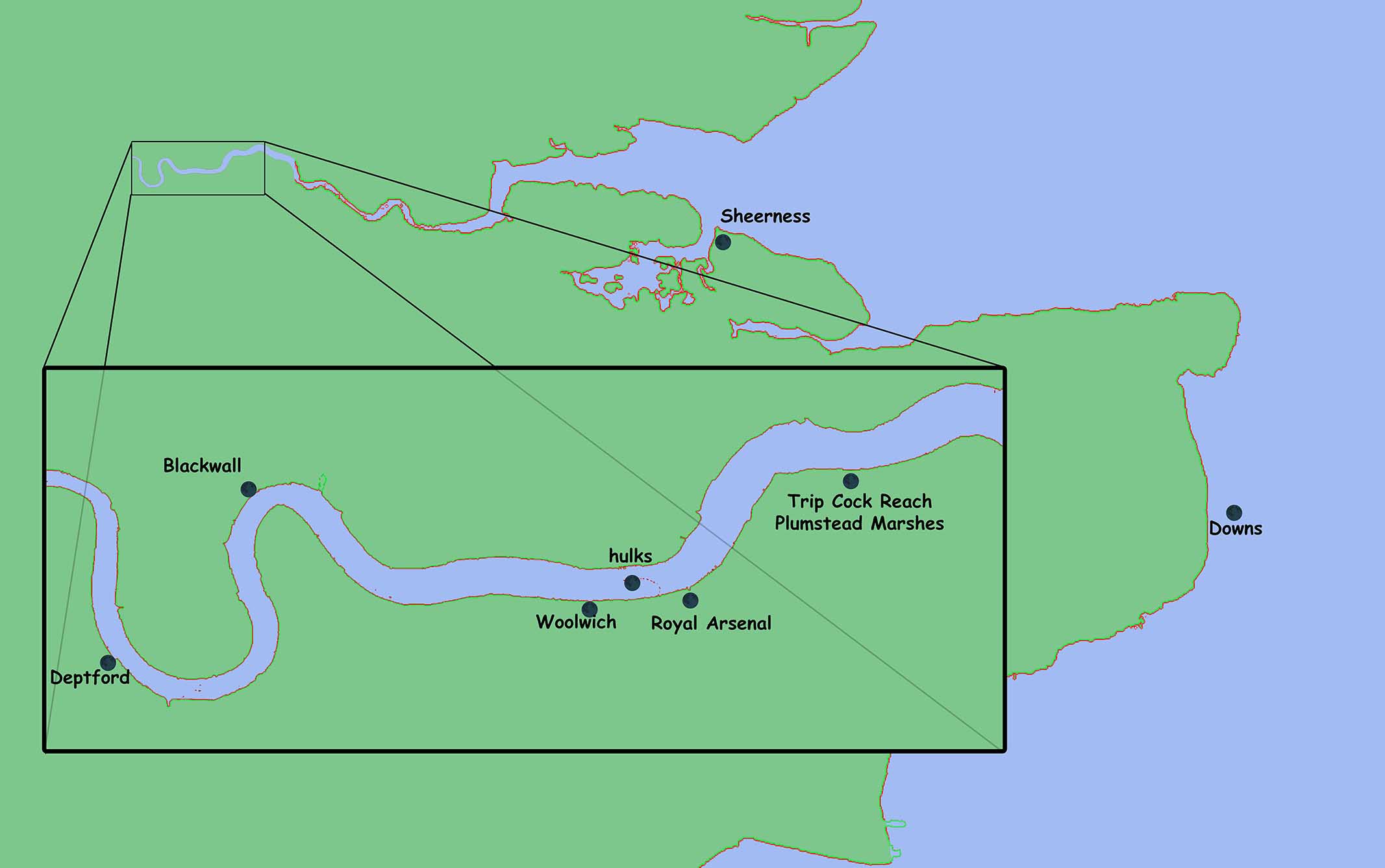
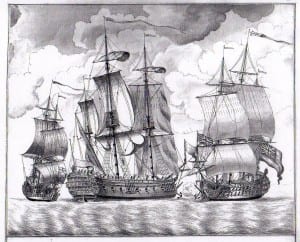
The above etching - click for more detail - shows other ships of the era from the journal of the East Indiaman Suffolk 1755/6 (L/MAR/B/397D – p. 89, British Library).
Recap: to get here I had to navigate a number of mistakes apart from my own ;D : Campbell’s erroneous assertion that there was one single Retribution at Woolwich & Sheernes; the National Archives omission of the Zealand from its descripton of one set of records; the false note in the 1964 James Hardy Vaux book that the Woolwich Retribution was 'an elderly Spanish thirty-two-gun warship by origin'; Greenwich Museum's mis-dating of John Grieve'sketch of the Retribution to 1815 in one window; and Lloyds Registers' 1803-1807 bogus listings of the Royal Admiral still sailing to Botany Bay.
Even John E Barnard (ibid) suggested incorrectly on page 48 that the old 1777 Royal Admiral was bought by the Navy Board and converted to a 64-gun! This is based on a confusing 17th September 1795 letter from Frances Barnard & Co (William had died 6 months earlier). I believe it concerns the 800 ton, 1773 York East Indiaman (page 64 ibid) owned by Sir Richard Hotham which possibly accounts for assertions in Lloyds Register and elsewhere that the 1777 Royal Admiral was "almost rebuilt" in 1794. Was it? I suggest it was the York. In 1779 the 1773 York East Indiaman was in dry dock at Deptford after being recovered from grounding on 1st January off Margate (John Barnard, ibid, page 91) while the Royal Admiral was still at sea, returning from its first voyage. They were two separate ships! Both were originally owned by Sir Richard Hotham. Particular thanks go to Rif Winfield for assisting with my voyage.
